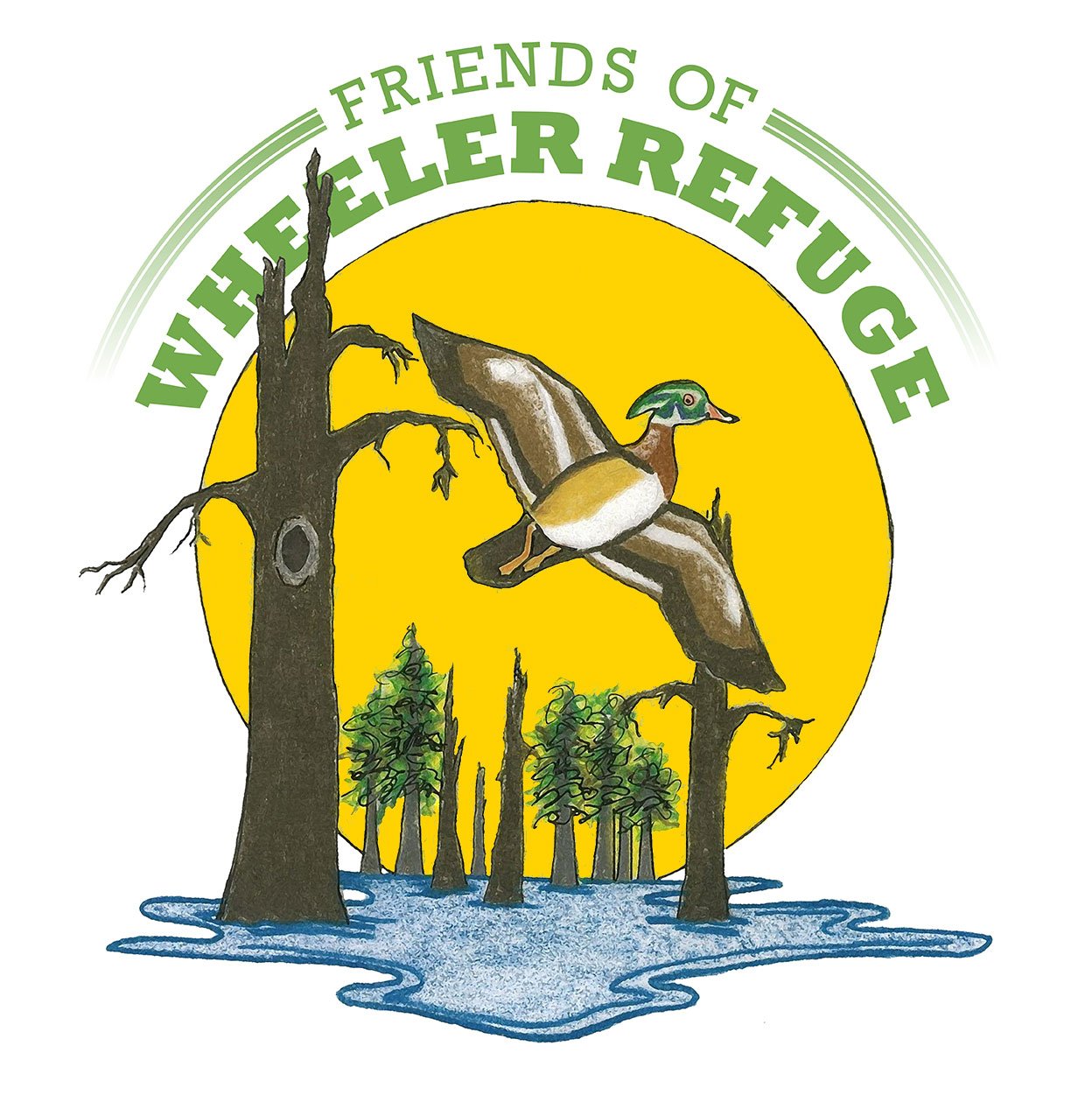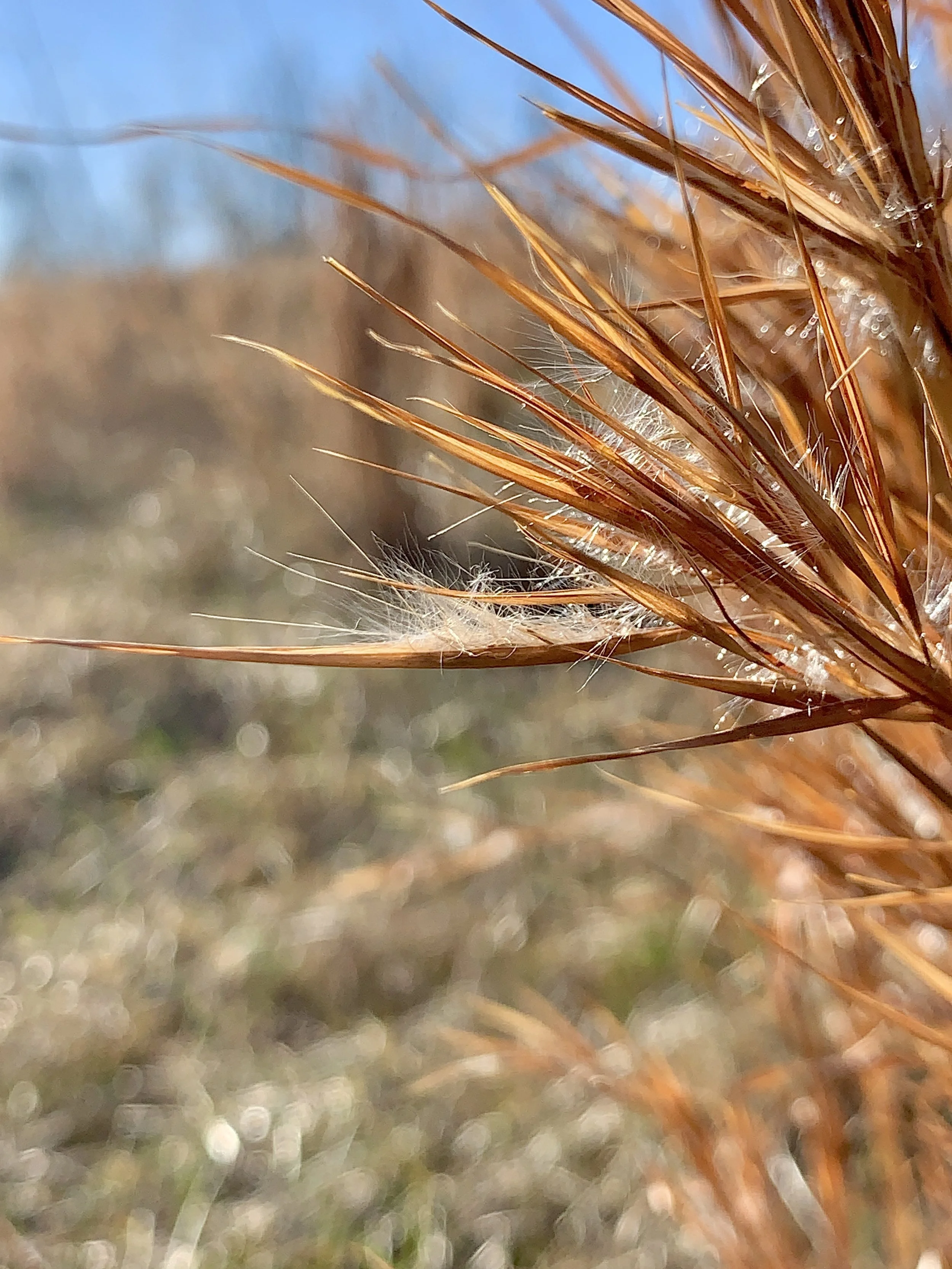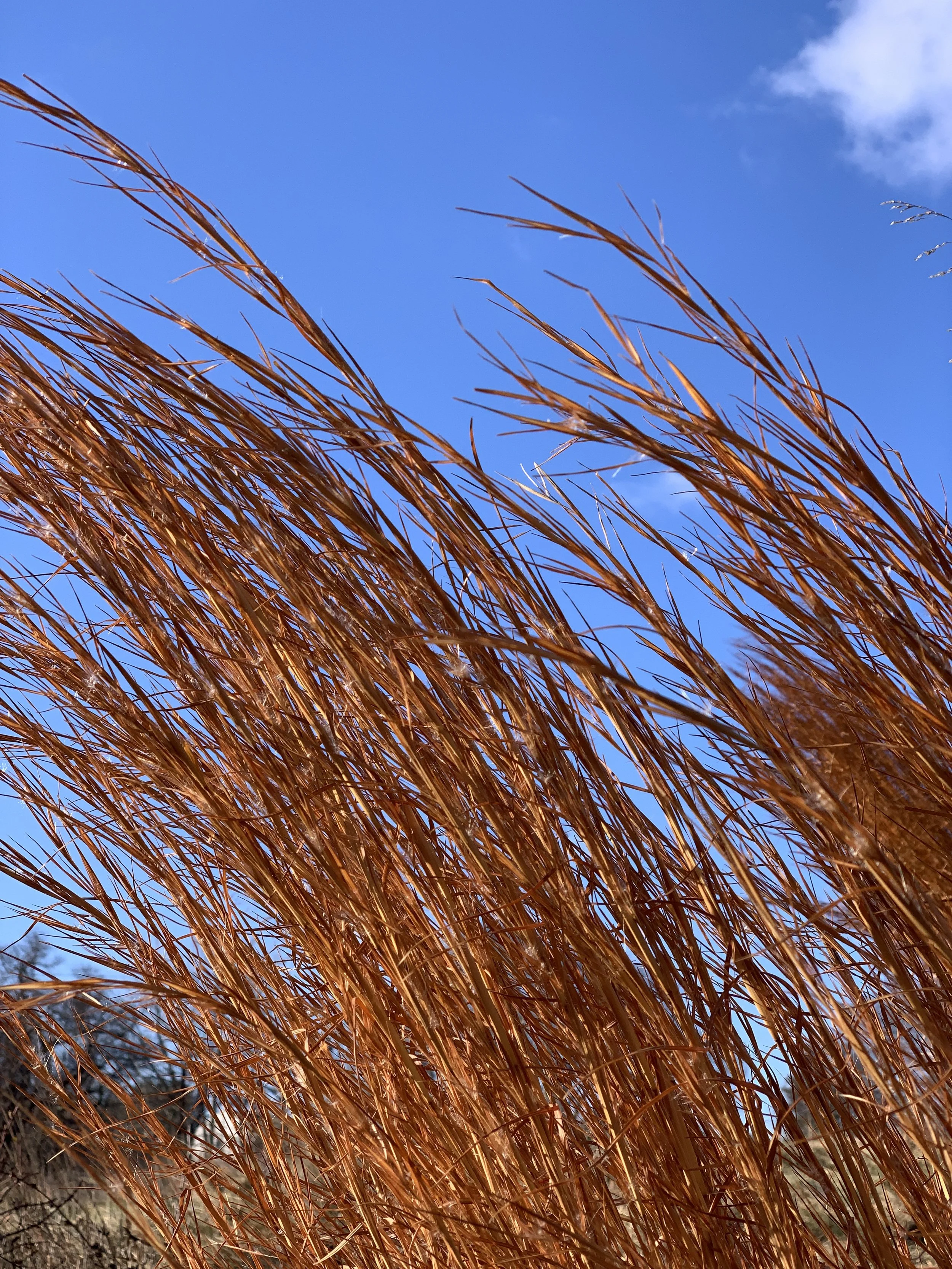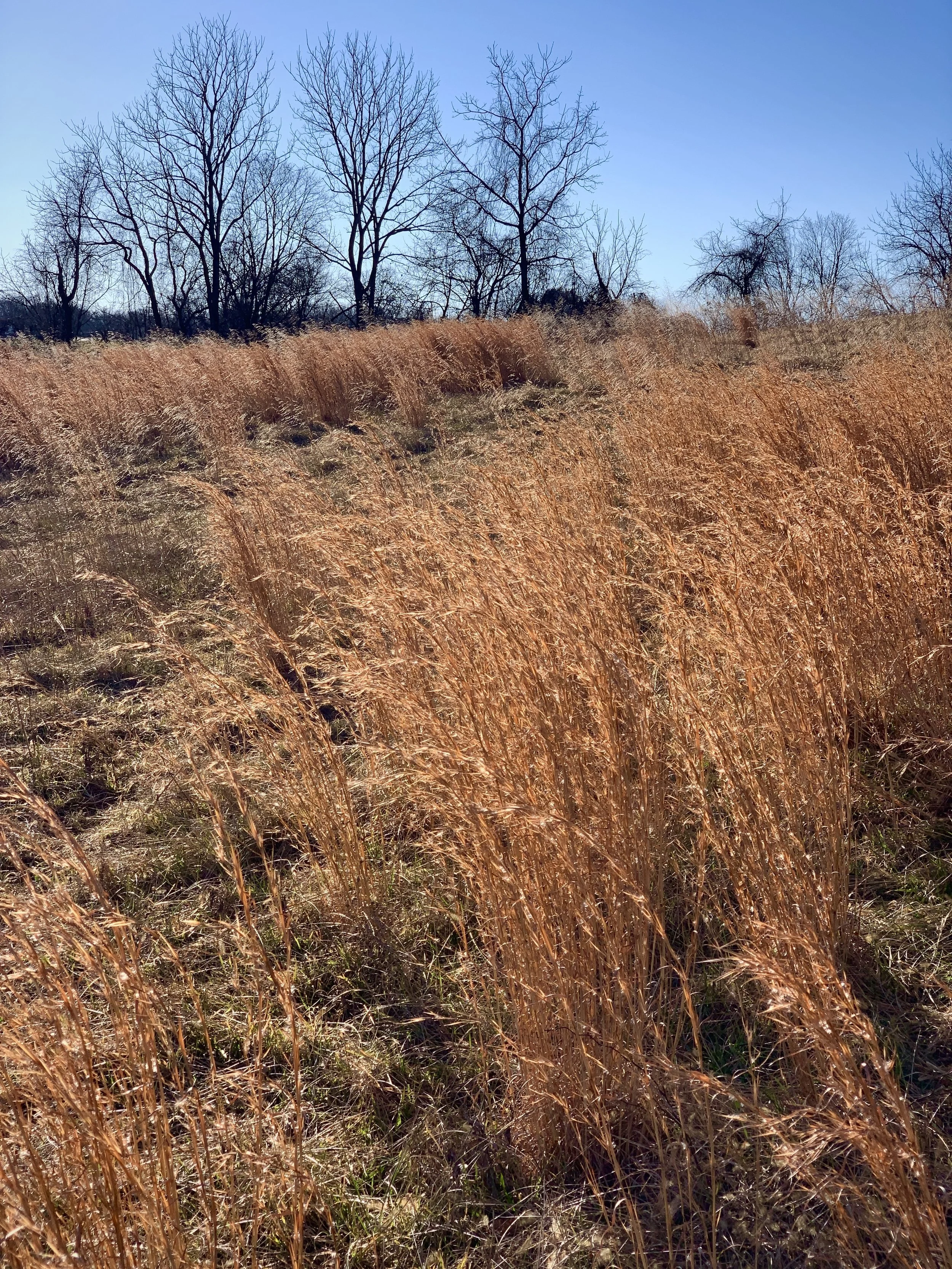Broomsedge
Andropogon virginicus (Broomsedge)
A perennial, clump-forming, fine textured grass that begins sending up new growth in the spring only after soil temp’s have thoroughly warmed (it’s classified as a warm-season grass).
Young blades are first bright green, often showing tinges of purplish, then morph toward orange/copper before eventually bleaching out to the color of straw at the conclusion of their year-long dance with the seasons. At this time of the year many clumps provide color that contrasts beautifully against a clear blue sky.
Highly tolerant of soils of low fertility and able to colonize these spaces (think strip-mined areas, for one). Considered lower in nutritional value than other native grasses and not good forage grass for stock animals.
Stories are told of newbie farmers being sold broomsedge-filled pastureland at bargain prices only to later find their livestock didn’t share that same enthusiastic view (meaning, they wouldn’t eat it).
“Broomsedge” alludes to its use in handmade brooms in the US. The plant was introduced into Australia, and now considered invasive there, after its use as a cushioning material for imported bottles of American made whiskey provided the means for seeds to escape into the surrounding landscapes, hence its common name amongst some Australians: Whiskey Grass.
Courtesy of Mark Gormel
Senior Manager of Horticulture
Brandywine Conservancy & Museum of Art (Chadds Ford, Pennsylvania)




